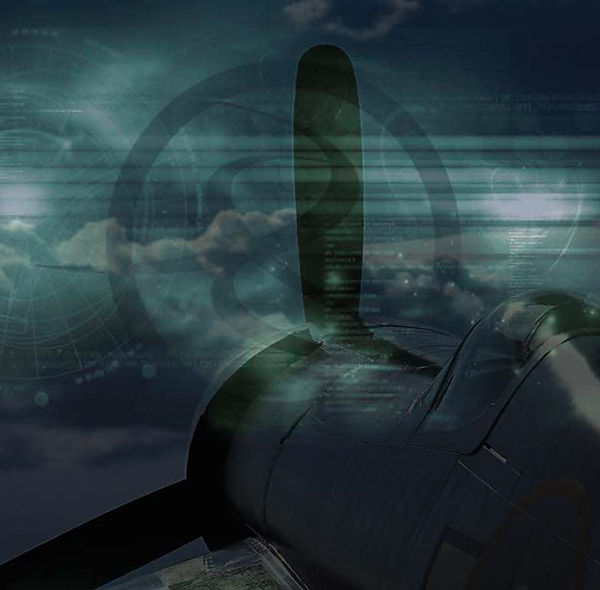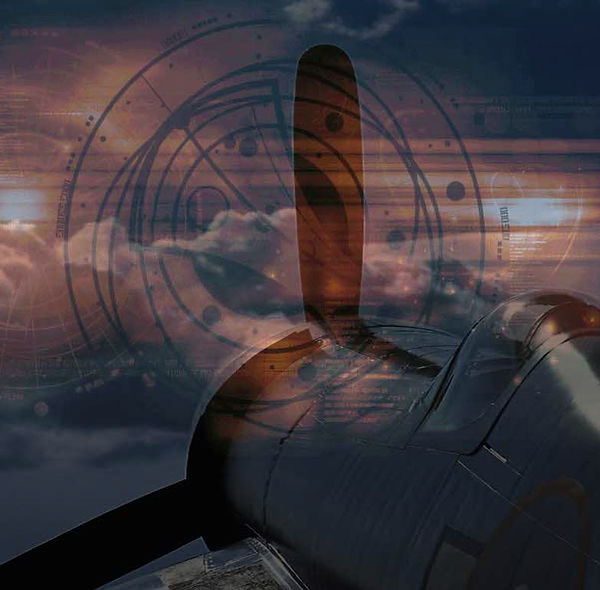
Hold your pointer on a tab in the menu on top of the page to view and handle the sub menus.



F2G the Goodyear Super Corsair (*)
In March 1943, F4U-1, BuNo. 02460, was turned over to Pratt & Whitney so that the compatibility between the new Pratt & Whitney R-4360 engine and the airframe could be evaluated. This aircraft was known as the F4U-1 WM, with the suffix letters standing for Wasp Major the name given to the huge 28 cylinder engine. It was hoped that the 3,000 horsepower developed by the powerplant could make the Corsair a superior interceptor that could protect the fleet.
Tests with the F4U-1 WM proved successfull and the Navy assigned Goodyear the responsibility of developing production Corsair variants that were powered with the R- 4360 engine.
Because of the greater lenght of the four row R-4360 radial , the engine cowling was elongated together with the air intakes behind the engine cowling, on top of the fuselage, this was an easy recognition feature. The tail surfaces were enlarged, and more fuel capacity was installed. Goodyear also fitted an all-round vision bubble cockpit on the F2G. This had first been tried on a FG-1A. It was a significant improvement, that for some reason was not adapted by later models of the Corsair.Two different versions were planned , the first models were land-based F2G-1s, but they were later followed by F2G-2 carrier fighters with hydraulic wing folding.
7 preproduction aircraft known as XF2G-1 s were converted from existing airframes. The first two of these planes retained the conventional canopy and vertical tail of the standard Corsairs, but later aircraft had a full bubble canopy and a cut down spine, to provide better all-around vision out-of-the-cockpit for the pilot.
The F2G was optimized for best rate of climb, and its initial rate of climb was 4400 feet per minute.This was a substantial increase when compared to 3120 feet per minute for the F4U-1 D and 3340 feet per minute for the F4U-4.Climb was indeed excellent, 9150m could be reached in 4 minutes. Maximum speed on the other hand was rather disappointing, 32km/h (20mph) down from the expected 724km/h (450mph). The F4U-5, with its uprated R-2800 engine, was faster than the F2G.
By early 1945, testing of the F2G-1 s was weIl underway, and the kamikaze threat to ships in the Pacific had increased the urgency for the program to proceed as fast as possible. But the next few months, dramatic changes in the war developed, and America prepared for an invasion of the Japanese homeland. Emphasis was shifted to the weapon systems that would be needed for the invasion and away from defense against the kamikaze attacks.
Perhaps more importantly, production of the Grumman F8F Bearcat was already weIl underway, and initial deliveries were being made to operational squadrons. These aircraft would soon be on carriers heading toward the combat zone, and the Navy believed that the F8F woufd be all the interceptor it needed. As a result, the production of the F2G ended after eight prototypes, five F2G-1s and five F2G-2s were completed. The follow-up model, the F2G-2, was to feature more carrier-friendly equipment.
The end result was a product that was powerful and held an impressive offensive punch. Due to its F4U origins, it was also inherently logistically-friendly.
The original order for 418 F2G-1s was cancelled, because the end of the war removed any need for the F2G.
In the end, Goodyear could only claim a total of ten of its F2G "Super Corsairs" completed. Five of this total were of the original F2G-1 model and the remainder of the batch were represented by the improved F2G-2 mark.
The Navy ordered that testing should continue with these aircraft,but there was never a need for further production of these Corsair variants. After being discarded by the Navy, several F2Gs became racing planes, and they participated in numerous air races for many years. One of these aircraft won the Thompson Trophy in 1947.
One surviving example went on to find a home at the Museum of Flight in Seattle, Washington, USA.
(*) : Index - References - Notes - Citations
In time Goodyear pushed development of an in-house version FG-1 intended for the low-altitude dogfighting role based on the F4U-1.
The result was the F2G "Super Corsair", the design was centered around the powerful Pratt & Whitney R-4360 "Wasp Major" 28-cylinder, four-row, air-cooled radial piston engine.
The form and function of the original F4U was retained in the F2G including the gull wing mainplanes, single rudder tail fin and central cockpit placement
Although often cited that the origin of the aircraft was as an interceptor of low-flying Japanese suicide aircraft, its actual beginnings came about in 1939 when the Pratt & Whitney company first proposed its enormous new engine. Thus the F2G lineage was tied to its engine design rather than tactical requirements